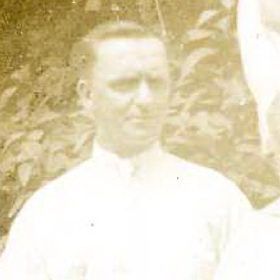
Minneapolis, Minnesota

Organised football came Minnesota, in reality the Twin Cities of Minneapolis and St. Paul across the river, in at least 1913 with the formation of the Minnesota Soccer Football Association, which in 1918 as the Minnesota Soccer Association had five teams as members, one of which was Thistles. The founders of the association are said to have been four men, by their names three Welshmen, actually two and a Londoner, and a Scot, Alex McFarland.
In fact Alexander McFarland was probably Alex McFarlane, who had in 1891, aged five, been living on Harmony Row in the heart of Govan, having also been born there in 1885 but at twenty-three arriving in Canada in 1908 and crossing the border to Minneapolis, where in 1911 he married Paisley-born Sarah Alexander. We know they were to have two daughters, only one of whom survived and that they remained in the city until at least 1917. Then he is recorded as a clerk, working for the North-Western Railway. And we know too that by the following year the family had moved to Chicago and then to Menominee, Michigan. And it was there that in 1926 that Sarah died, aged just forty-six, Alex re-married, to another Diaporan-Scot, Helen McKenzie, himself died in 1941 at just fifty-five and without any apparent further involvement in the game and is buried in Riverside Cemetery.
And with Alex's departure the Minneapolis football baton was, had already been passed on, literally, and now to three more and then four Scots. In 1918 the Secretary of the state association was Wiliam Brenigan, and would be for six years, and the Northwestern League had been formed, the creation of which he graciously puts down to the earlier efforts of "Scotty" McLaren and Alex Murray. William Brenigan is an interesting character, an American-Scot rather than a Scottish-American. He was Califonian-born, in 1885 like McFarlane, into a family that had moved back and forth across the Atlantic. However, also like McFarlane he was brought up in Govan. In fact there is the very good possibility Brenigan and McFarlane knew each other from the Auld country since at fifteen/sixteen they stayed just two minutes on foot away. Indeed the acquaintance may even have been from the football pitches of Govan's Elder Park, which the home of the latter overlooked and was just at the end of the road for the home of the former.
And the connections continued. In 1920 William Brenigan, marrying in 1926 but then a single man working as a "stocker", was lodging with a married couple by the name of McLaren. The husband was Mungo McLaren, aka "Scotty", player for and stalwart of the Thistles. He was a Mechanical Engineer/Machinist born in Dundee in 1884, who had arrived in the States in 1901, returned home to visit in 1905 and in 1907 married his girl from home, Williamina Niven. They were to have three children, two girls and a boy, and continue to live in the Twin Cities until Scotty's death in 1965. William Brenigan had died there in 1957 to be buried in Chicago.
So that is two down and two to go. Next is Alex Murray, Alexander Thomson Murray. He was a with McLaren a fellow Machinist, one probably born in Aberdeen, in late 1881 and again from a Transatlantic family. His parents, his father a stonemason, seem to have moved to the USA in the late 1860s, returned to Scotland after 1876 and crossed The Pond post 1882. Alex seems to have made the journey as a young child in 1885. In 1900 and 1905 he is living with his family just north of St. Paul. In 1910 it is just with his parents. In 1918 he has with his brother moved to Portland, Oregon. And from there it would be, still single and living with other family, to California, where in 1864 he would die, aged eighty-two. He is buried in Sunset View Cemetery in Berkeley.
And finally there was Alex Smith, player alongside McLaren and star forward of the Thistles team, of which Brenigan would be manager. Smith had been born in 1887 in Buckie, had arrived in the States in 1907 and married in Minneapolis-St-Paul in 1909. He and his wife Linda were to have two children. In Scotland he had worked as a Draper's Assistant. In his new home he found work as a Sealer in a packing-house until in 1917 he was tempted into the professional game in Montreal in Canada. But it seems he did not stay long. By 1920 he had moved back to St. Paul, he now a Stock-Dealer, i.e. cattle, the work he was to have until his death in nearby Benton at the age of eighty-eight in 1975. he is buried in the Immaculate Conception Parish Cemetery.
